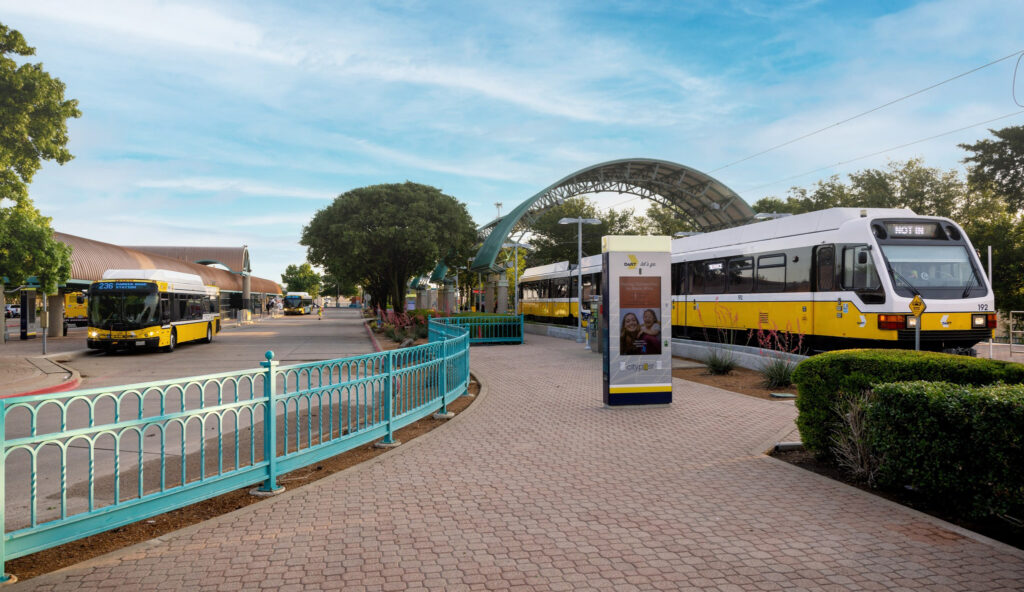Study Shows DART TOD Drives Billions in Economic Growth in North Texas
11/20/2025


Transit-Oriented Development (TOD) around Dallas Area Rapid Transit (DART) light rail stations is paying dividends for North Texas. A newly released economic impact study from the University of North Texas (UNT) shows that TOD generated $18.1 billion in direct economic impact within a quarter mile of DART light rail stations in the past 25 years. The latest two-year period alone (2022-2024) accounted for $1 billion of that total—evidence that the region’s momentum around rail-centered development continues to accelerate.
Researchers say the findings reinforce what planners and economists have long observed: communities built around high-capacity transit attract investment and create lasting value. “We know over the past 25 years of study that transit-oriented development around DART light rail stations results in commerce, tax revenue, and jobs,” said Michael Carroll, PhD, UNT’s University Economist & Director of the Economic Research Group. “When we center sustainable transportation in development, the result is beneficial in nearly every way.”

The economic benefits ripple far beyond construction. The study found that residential properties in TOD areas commanded 10 percent rent premiums, while commercial spaces saw 12.6 percent higher rents compared with properties more than half a mile away. TOD is also proving to be a jobs engine, responsible for 5,295 direct jobs and $428 million in labor income in the last two years alone.
Even during a period of post-pandemic market fluctuations, development near stations continued to generate robust public revenue. From 2022-2024, construction activity produced $51.5 million in state and local tax revenue, surpassing the core pandemic years. More than half came from construction sales taxes, with property taxes adding another $21.1 million.
For DART leadership, the study underscores the agency’s role as a regional economic catalyst. “When we talk about the role DART plays in the local economy, we mean that in a very literal sense, beyond just moving people to and from their jobs,” said Nadine Lee, DART president and CEO. “Every dollar generated by and within development around our light rail stations has the ability to improve our cities, provide economic mobility and stability to our residents, and grow opportunity for North Texas.”
Today, new projects across the region are continuing to convert DART-owned land—often once surface parking lots—into walkable communities tied directly to rail. Major developments include:
- Mockingbird Station (Dallas): A major mixed-use expansion on 11 acres of former parking, with multifamily housing, office space, hotel rooms, and a new public plaza. Phase one is expected to be complete in 2027.
- Buckner Station (Dallas): A $107 million, 304-unit mixed-income community with direct access to light rail, bus, GoLink, and paratransit services. Leasing begins in late 2026.
- Trinity Mills Station (Carrollton): A $1 billion mixed-use district built on city and DART land, anchored by the newly completed EVIVA Trinity Mills development.
- Addison Junction (Addison): A planned $240 million destination surrounding the new Silver Line station, featuring offices, retail, entertainment, hotel space, and public outdoor amenities.
For North Texas, the results of this 25-year study offer a powerful message: investments in rail don’t just move riders, they shape regional economies. As communities across the U.S. look to revitalize neighborhoods, expand affordable housing, and create connected job centers, DART’s record demonstrates how TOD can become a cornerstone of economic strategy, not simply a transit amenity.